There are hundreds of free powerlifting programs that you can find on the internet that cater to different levels of powerlifters. You have old programs that have changed in popularity over time, and you have new coaches coming up with their own programs. Trying to decipher what program to start with can leave you paralyzed with the amount of options.
So what are the best powerlifting programs? Here are the list of the 6 best free powerlifting programs:
Best Beginner Programs
- Greyskull LP for Powerlifters
- TSA Beginner Approach
- TSA 9 Week Intermediate Approach 2.0 Program
- 2022 PRs 15 Week Program
- Battalion Barbell 16 Week Program
- Coach Arian 8 Week Intermediate Strength Block
In this article, we will go through what makes a good powerlifting program, what makes the featured programs the best programs out there, and what you need to take in mind before committing to using these programs.
What is a powerlifting program?
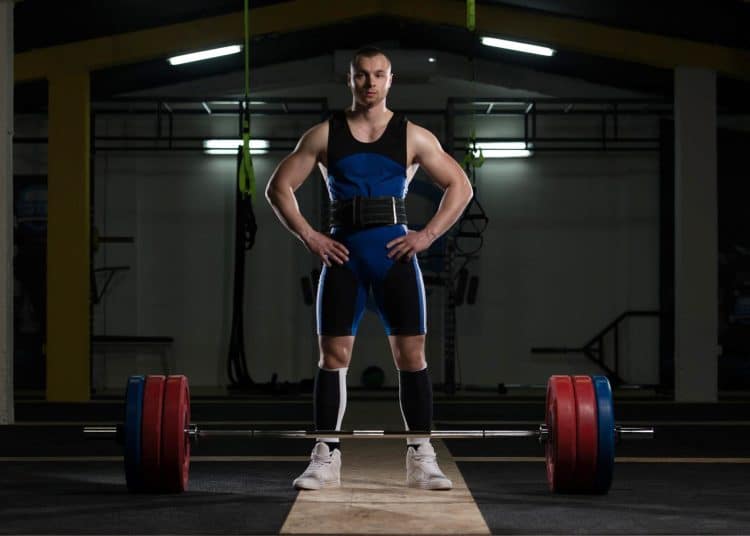

A powerlifting program is a training routine for powerlifters to improve their performance in the main three lifts of the back squat, the bench press and the deadlift. It consists of a series of training spread over a number of weeks or months with a prescription of sets, reps and intensity for designated exercises.
Powerlifting programs can vary in how the training variables are distributed and are based on a logical application of scientific principles of strength training.
What makes a good powerlifting program?
There are several factors that are involved in determining whether a program is good or not. We did not use these programs for ourselves to determine whether they were good, because individual responses to programs can be very variable due to our genetics and lifestyle. Instead, we wanted to assess these programs based on how well these programs applied important principles.
Here is a list of key factors that we based our assessment on:
- Progressive Overload
- Autoregulation and Fatigue Management
- Specificity and Exercise Selection
- Intensity and Volume Distribution
- Flexibility and Individual Preferences
Progressive Overload
Overload is one of the primary principles necessary to improve performance in powerlifting. Imposing overload on your body means exposing your body to weights that trigger a response in your body to create adaptations that result in being stronger.
After giving your body time and resources to recover and create strength adaptations, your body will eventually adapt to the stimulus in a way that you can overcome your previous training. Repeating the same stimulus will eventually no longer trigger an improvement in performance. This is where progressive overload comes into play.
Within the context of a beginner or intermediate powerlifting program, if there is evidence of a progression between sessions or between training weeks, then there is likely to be progressive overload.
Autoregulation and Fatigue Management
Another important component to a good powerlifting program is an element of either autoregulation or fatigue management. Autoregulation in a program is a feature that allows you to respond according to a changing level of readiness to train.
When we go onto a journey of training, we expose ourselves to training, we fuel ourselves to train and grow, and we give ourselves a chance to rest and recover. Outside of this process exists a lifestyle that can have an unpredictable impact on your fatigue levels and daily potential of performance.
Autoregulation is a principle based on adapting to individual differences. Different people will naturally respond differently to the same dose of training. Also within the same person, the person will respond differently to the same dose of training at different points in time.
Autoregulation in powerlifting often involves some form of RPE or RIR in the training prescription, which stands for rate of perceived exertion or reps in reserve respectively. This allows the lifter to self select the weight that is most appropriate for them on that day.
If autoregulation is not used, then some other form of fatigue management is necessary in the program. This may come in the form of a gradual or sharp reduction in training difficulty in order to reduce the stress imposed on the body. This will give you more time to recover and allow adaptations to happen better.
Specificity and Exercise Selection
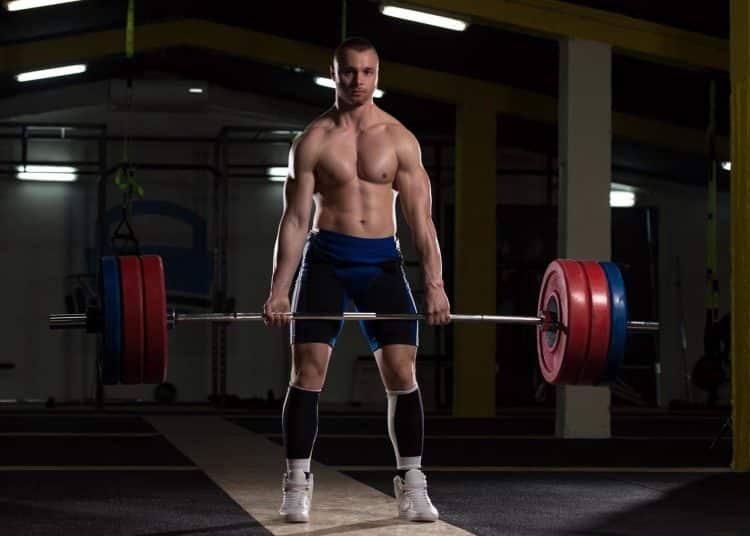

What is specificity and what does it refer to?
Specificity refers to how relevant a given exercise is to the goal at hand, in this case the main variations of the back squat, bench press and deadlift that we perform in competition. It is based upon the SAID principle, which stands for specific adaptations upon imposed demand.
This means that although there may be general changes that happen to our bodies when we exercise, there are also very specific things that happen depending on the exact exercise that we train in our programs.
Why is specificity important?
Specificity is important because in order to be good at the main lifts, we need to have practice on those main lifts. The other part of specificity is not just the exercises, but also the intensity of the training that we do. In short, in order for us to get stronger, we must lift heavy weights. This may look like exposure to 80% of your 1 repetition maximum or more in training.
Are high levels of specificity all we need?
High levels of specificity is great, but we also do need some degree of variability, which is on the opposite end of the specificity. Variability refers to the degrees at which an exercise differs from a given exercise.
A level of variability may be important for some athletes as this enhances different areas of an athletes performance. This is used to often enhance the weak areas of a movement.
Having a selection of other exercises will be important for powerlifters to improve strength and muscle mass in areas that will directly and indirectly improve performance long term.
Intensity and Volume Distribution
Intensity and volume are basically the meat and potatoes of a powerlifting program. It refers to how heavy and how much of the weights you should be doing at each exercise every session.
Intensity may refer to intensity of load, which is how heavy a weight is relative to your 1 rep maximum. Intensity may refer to intensity of effort, which is how close you are to failure. This is often measured in RPE, which stands for rate of perceived exertion and is a scale out of 10.
A good powerlifting program will have an appropriate distribution of repetitions and intensity suitable for the target demographic that it is aimed at. The more experienced a powerlifter is, the more volume and intensity that the lifter will often be able to deal with.
What should beginner powerlifting programs be like?
A beginner powerlifter will be relatively new to the sport of powerlifting. They may or may not have had weight training experience, but their experience of the main lifts performed in the style that would be executed in a competition will be limited.
A beginner does not need to be exposed to a great number of exercise variations for a given exercise group, for example, for squats, they do not need a high number of different variations of the squat. As they have not got a long history of performing the competition style back squat, just by spending time performing the back squat will be good enough for them to make really good gains in it.
A good beginner powerlifting program will have a prescription to lots of simple bodybuilding exercises for different muscle groups as developing muscle mass long term will be important for powerlifters.
Beginners will often need a lower number of sets as their work capacity to do a lot of sets will be limited, and they should start with relatively lower intensity weights to begin with.
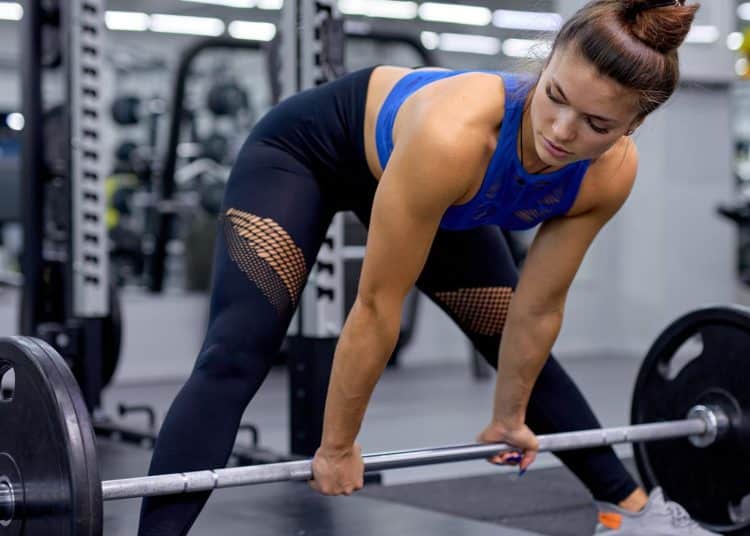

An intermediate powerlifter will no longer be at the stage where they will be progressing from session to session, but more so week to week or month to month.
Intermediate powerlifters will likely benefit from more variations of the main lifts: the back squat, bench press and deadlift. This is because after moving on from the beginner phase of powerlifting, intermediate powerlifters may likely have a slower rate of progress. Including different variations of the main lifts may help contribute a novel stimulus to keep the progress going.
Intermediate powerlifters will also be able to tolerate more volume and need higher levels of intensity in their main lifts too. Research has shown that as an athlete becomes more experienced, they will need on average higher levels of intensity in training in order to progressively overload and progress.
Why are advanced powerlifting programs not reviewed?
When a beginner powerlifter comes into the sport, they can make good gains doing nearly any beginner powerlifting program as they make fast progress as a novice. Most intermediate programs can help most intermediate powerlifters.
However, as an athlete gets more advanced, their needs become more and more specific, and would benefit from individualized programming instead of cookie cutter programs. This is when writing your own program or hiring a coach may be a better option.
What do you need to take into consideration before using a program?
Before you pursue a cookie cutter powerlifting program, you should consider several things before choosing one to train with. Here are a list of things you should consider when choosing a powerlifting program:
- Technique
- Injury Status
- Training Availability
- Equipment Availability
- Competition Calendar
Technique
You need to consider whether you have good enough technique that is also consistent through your training. If you have poor technique, it is worth trying to improve your technique first potentially with a coach before embarking on a cookie cutter powerlifting program.
Having poor technique will be reinforced by repeating poor movement when using a cookie cutter program. Long term, this can potentially increase your risk of injury. You may also need to consider how consistent your technique is, if your technique is good.
Injury Status
You need to consider your injury status when using a cookie cutter powerlifting program as most powerlifting programs that are free to access normally have the prerequisite that you are free from injury first.
If you have an injury or have just recovered from an injury, you may want to consider seeing a qualified health professional such as a physical therapist before pursuing a powerlifting program.
Training Availability
Some training programs have flexibility or variations with how many days you can train, but some have a strict prescription of a certain number of days you should train per week. You need to consider choosing one that fits your training availability and lifestyle.
Equipment Availability
Some programs may have prescriptions of certain exercises that require certain pieces of equipment. So it is important to review what you need access to, to decide whether a program is practically possible for you, and decide whether to choose a gym that has it or find a different program.
Competition Calendar
Powerlifting programs can come in different durations in the whole cycle. You may need to take into consideration when you plan to compete in your competition calendar to decide whether a particular program fits your needs. You may need to time the start of a particular program so that the end of the program coincides with your competition.
If you are not a competitive powerlifter in the sense that you are not looking to compete, then you can run any powerlifting program and test your 1 rep maxes at the end of the block.
2 Best Beginner Powerlifting Programs
Greyskull LP for Powerlifters
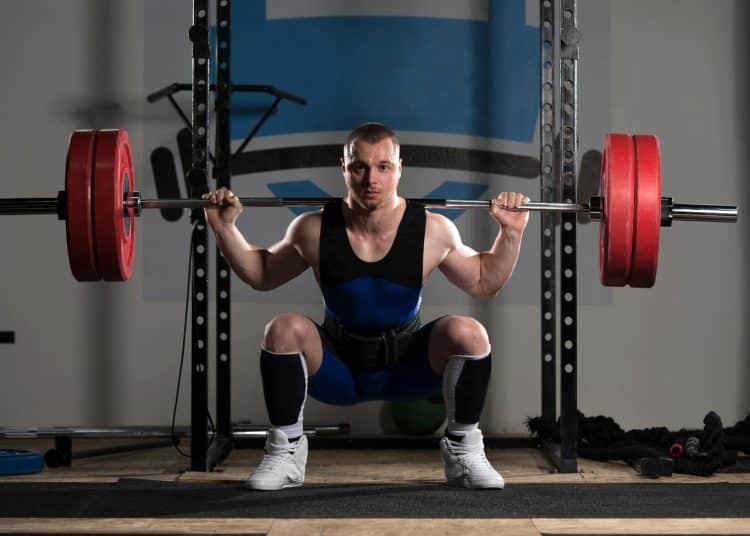

Greyskull LP is one of the best beginner powerlifting programs out there that is based on a 3 day training week. The LP in Greyskull LP stands for linear progression, which describes the way that the prescription progresses every session.
It was invented by John Sheaffer for the goal of increasing the squat, bench press, deadlift and overhead press. Although the overhead press is not a main powerlifting movement, it does serve to be a good accessory exercise for indirectly improving the bench press.
This program is known for its simplicity with its sets, reps and load prescription, and the use of AMRAPs, which stands for As Many Reps As Possible. AMRAPs are used for the main lifts to allow you to push as hard as you can on the last set.
Greyskull LP relies on cycling a 2 week training cycle that is repeated until you plateau. It trains the squat 2x per week, deadlift 1x per week, and trains the overhead press and bench press 1.5x per week.
Program Sample:
Week 1
Day 1
- Bench Press – 2×5, 1xAMRAP
- Squat – 2×5, 1xAMRAP
- Plug-In Accessory Exercises
Day 2
- Overhead Press – 2×5, 1xAMRAP
- Deadlift – 1xAMRAP
- Plug-In Accessory Exercises
Day 3
- Bench Press – 2×5, 1xAMRAP
- Squat – 2×5, 1xAMRAP
- Plug-In Accessory Exercises
Week 2
Day 1
- Overhead Press – 2×5, 1xAMRAP
- Squat – 2×5, 1xAMRAP
- Plug-In Accessory Exercises
Day 2
- Bench Press – 2×5, 1xAMRAP
- Deadlift – 1xAMRAP
- Plug-In Accessory Exercises
Day 3
- Overhead Press – 2×5, 1xAMRAP
- Squat – 2×5, 1xAMRAP
- Plug In Accessory Exercises
Pros
- Flexibility in accessory exercises
- Simplicity in volume
- Autoregulation in AMRAPs
Who Should Do this Program
- Busy powerlifter.
- Motivated by frequent progress.
- Want a mentally challenging program.
- If you have very good technique.
Related: GreySkull LP: The Ultimate Strength and Size Program for Beginners
TSA Beginner Approach
The TSA Beginner Approach is a beginner program written by The Strength Athlete, which is a collective of powerlifting coaches lead by champion powerlifter Bryce Lewis.
They made this program in mind of improving what a beginner program should look like as the vast majority of free beginners powerlifting programs out there seem to be highly specific with just the main variation of the back squat, bench press and deadlift.
They have created a beginner program that offers a choice between a prescription of RPE or percentage based load for the main lifts. This is useful since many beginners do not necessarily have a 1 rep max to work with. Although a 1 rep max can be estimated on previous best performance.
This program also takes into consideration the holistic needs of a powerlifter by implementing a full body approach to their bodybuilding training in their accessories. This program can be initially used with an RPE based prescription. After running a cycle of this program, you can test your new 1 rep maxes and input them into the program again to run as a percentage based program.
Program Sample:
Week 1
Day 1
- Competition Squat
- Bench Press
- DB Bench Press
- DB Row
- Decline Weighted Situp
Day 2
- Paused Deadlift
- Bench Press
- Barbell Hip Thrust
- Tricep Pushdown
- DB Curl
Day 3
- Competition Squat
- Lat Pulldown
- One Arm DB Shoulder Press
- Single Arm Overhead Tricep Extension (DB)
- EZ Bar Curl
Day 4
- Deadlift
- 3 ct. Paused Bench Press
- Leg Press
- Leg Extension
- Athlete Movement of Choice
Pros
- Exercise selection is prescribed and straight forward
- Choice given between percentage or RPE
- Autoregulation with accessory exercises
- Prepares you to max out or compete
Who Should Do this Program
- Want to reinforce technique
- Want to be conservative with training (and have a fixed program)
- Prepare for competition
TSA 9 Week Intermediate Approach 2.0 Program
The TSA 9 week intermediate approach 2.0 program is also another free program written by The Strength Athlete coaches. It has a similar feel to the TSA beginner approach program for beginners, but this program is slightly more advanced so that it suits the intermediate lifter.
They have split this training program into two blocks of training. The first block of training focused on building muscle mass and accumulating lots of repetitions in the main lifts and the second block is focused on turning the volume done in the first block into maximal strength.
The squats and deadlifts are prescribed with mostly percentages in the first block with more autoregulation in the second block with higher intensity top sets. The bench press has some level of autoregulation in the sets from the first block through to the second block of training.
Program Sample:
Week 1
Day 1
- Competition Squat
- Bench Press
- Close Grip Bench Press
- Chest Supported Row
- Band Pull-Aparts
Day 2
- Deadlift
- Bench Press
- Pendlay Row
- Weighted Back Extension
- Pull-ups
Day 3
- Competition Squat
- DB Incline Bench Press
- Leg Press or Hack Squat
- Chest-supported Row
- Athlete Movement of Choice
Day 4
- Bench Press
- Feet-up Bench Press
- Paused Deadlift
- Barbell Row
- Neutral/Underhand Lat Pulldown
Pros
- Simple and short training sessions
- Prepares you for a max out
- Gives flexibility for accessory exercises
- Planned deload week for recovery
Who Should Do this Program
- If you have previously used TSA Beginner Appoach
- If you are preparing for a competition
- If you prefer a percentage based program
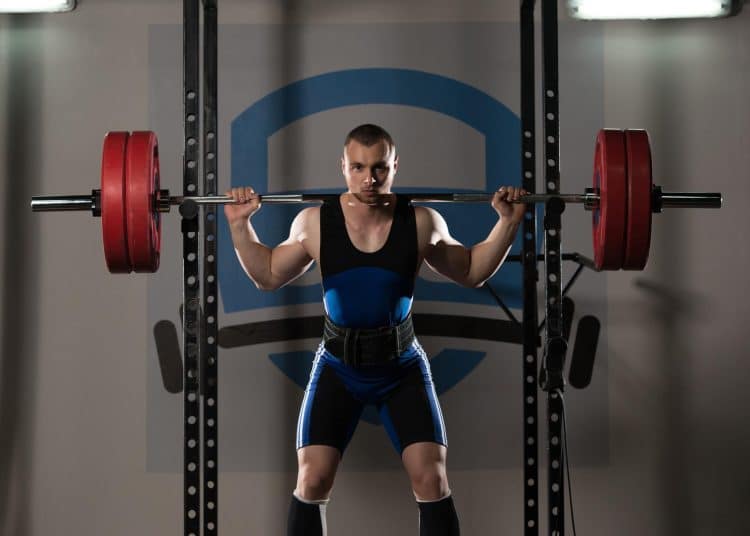

PRs 15 Week Intermediate Program
The PRs 15 Week Intermediate Program is written by Steve Denovi of PRS Powerlifting. This program is written with the option to either peak for a competition or to use as a training cycle that would be repeated back to back.
The training is spread across 3 blocks of training, with the 3rd block of training with an option of either having a peak and taper or just an intensity block. This program heavily relies on autoregulation with RPE as a way of prescribing its top sets, which also determine its back off sets.
This high reliance on using RPE to determine the top sets means that there is also a demand for a sense of training maturity from you as an athlete. The program demands that you do not let your ego determine what your high RPE top sets.
This means trying your best to match your performance to the program as much as possible without overshooting the RPE. This is because if you overshoot the RPE, the back off sets will then be higher than it should be accordingly. Overshooting the RPE will also fatigue you more leading up to the back off sets.
Program Sample:
Week 1
Day 1
- Competition Tempo Bench Press 3-1-0 Tempo
- Incline Dumbbell Bench Press/Machine Press of Choice
- Pulldown of Choice
- Row of Choice
Day 2
- Competition Pause Squat 0-1-0 Tempo
- Larsen Close Grip Bench Press 0-1-0 Tempo (3 fingers in from normal grip)
- RDLs 2-0-0 Tempo
- Belt Squat/Leg Press
Day 3
- Competition Bench Press 0-1-0 Tempo
- Dumbbell Bench Press
- Chest Supported Row of Choice
- Tricep Extension of Choice
Day 4
- High Bar/SSB Squat
- Pause Deadlift 0-1-0 Tempo (just off the floor)
- Hamstring Machine Curl of Choice
- Face pulls
Pros
- Gives options to peak for a competition or continue training
- Autoregulation with main lifts
- Progression with accessory movements
- Gives you choice of accessory movements
Who Should Do this Program
- If you prefer an autoregulated program
- If you have an irregular lifestyle
- If you have good experience using RPE prescription
Battalion Barbell 16 Week Program
The Battalion Barbell 16 week program is an intermediate powerlifting program written by Battalion Barbell, which is led by Powerlifting Coach Alex Pearson Jones. It is a program that is written with a combination of both percentages and RPE prescription.
It is spread across 3 blocks of training with the first block of training preparing you to be able to train with higher volumes of work, the second block building high levels of volume and the third block peaking you with higher intensity sets.
The first block of training uses RPE top sets and gets you exposed to high levels of intensity from the get go. There are several slow tempo variations of exercises to get you used to controlling your bar path during execution. This will help engrain exercise technique.
The second block of training pushes you with AMRAPs but not to absolute failure and capping it with one rep in reserve for some of the main exercises. This will help you push yourself to do as much as you can each week.
The third block of training will attempt to reduce overall fatigue to best prepare you for training with higher intensity work. This block can be used to help you get ready for a competition that you may have planned.
Program Sample:
Week 1
Day 1
- Competition Squat
- Tempo Bench Press 5-3-0
- Neutral Grip DB Bench Press
- Hamstring Curl
Day 2
- Competition Deadlift
- 3-0-3 Tempo Leg Press
- Short Lever Copenhagen Plank
- Cable Pull-Throughs
Day 3
- Competition Bench Press
- Chest Supported Row
- Neutral Grip Lat Pulldown
- Dips
- Overhead Rope Extension
Day 4
- Tempo Squat 4-2-0
- Tempo Bench Press 3-2-0
- Romanian Deadlift
- Side Planks
Pros
- Good for reinforcing technique
- Prepares you for competition
- Intelligent accessory selection
- Gives exposure to heavy singles
Who Should Do this Program
- If you lack confidence with technique
- If you want to be mentally pushed
- If you are preparing for a competition
Coach Arian 8 Week Intermediate Strength Block
The 8 week intermediate strength block is a powerlifting program written by Coach Arian, who is a powerlifting coach from the USA. This is a completely percentage based program where all of the squat, bench and deadlift variations have been given a specific load prescription based on your own 1 rep maxes.
This intermediate strength block does not have a huge emphasis on bodybuilding movements, but includes quite a high number of different variations of the squat, bench and deadlift. This helps you strengthen the movement through improving different aspects of each main movement including different points of the range of motion.
This program does not intend to peak and taper you for a powerlifting competition, but instead be used for the off season, and potentially be used back to back.
This program would work better if you are someone who came from a bodybuilding background and want to focus on improving technique of the main movements.
Program Sample:
Week 1
Day 1
- Competition Squat
- Front Squat
- 2 Count Pause Deadlift
- Face Pull
Day 2
- TNG Bench
- Closer Grip Bench
- Back
- Triceps
Day 3
- Pin Squat, in the hole
- Competition Deadlift
- Romanian Deadlift
- McGill Stir the Pot
Day 4
- Competition Bench
- DB Shoulder Press
- Back
- Triceps
Pros
- All main lifts are percentage based
- Gives choices for accessory exercises
- Training block can be used back to back
- Incorporates variations for main lifts
Who Should Do this Program
- If you have a regular lifestyle
- If you want a percentage based program
- If you are not competing anytime soon
- If you came from a bodybuilding background
Frequently Asked Questions
How many times a week do powerlifters train?
The vast majority of powerlifters will train between 3 to 4 days per week. More advanced or keen powerlifters may choose to train 5 to 6 days per week. Powerlifters training 2 days per week or daily are rarer.
What split is best for powerlifting?
The best split for powerlifting will depend on your needs and preference. Good powerlifting splits will often either alternate between upper and lower body movements, or alternate between squats and deadlifts.
How much is a powerlifting program?
Powerlifting programs can be free to access or they can be paid programs, which normally cost under $100. There are also subscriptions to access a library of programs, in which you need to pay a monthly fee.
Is 6 days a week too much for powerlifting?
No 6 days a week is not too much for powerlifting, because you can control how much training you do on each of the 6 days. If you are more of a beginner, you may have shorter and easier sessions. If you are more advanced, you may have a longer and more intense session on some of the days.
